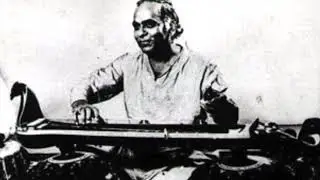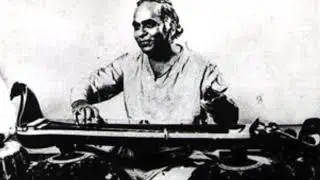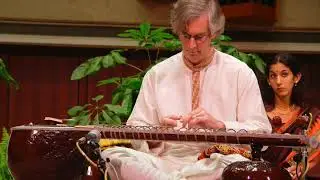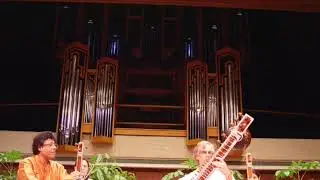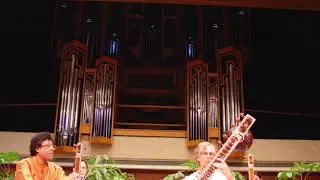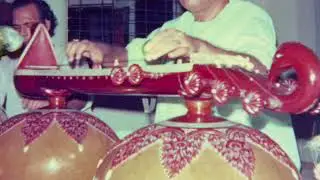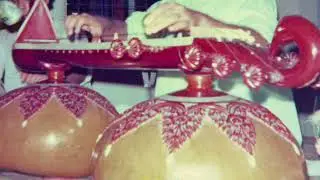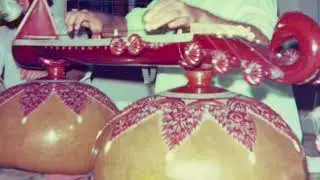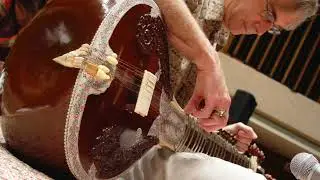Lalmani Misra, vichitra vina & Ishwar Lal Mishra, tabla | Raga Malkauns; dadra, Raga Bhairavi
Dr. Lalmani Misra was the foremost exponent of the rare instrument, vichitra vina. He was known as both a musician and a scholar. As a musician, he performed on a number of different instruments such as sitar, sarod, santoor, and jal tarang. However, he was most accomplished on the vichitra vina, which remained his primary instrument for performance throughout his adult life. As a scholar, his publications include instructional books for teaching Hindustani instrumental music, such as his Tantri Nada, and an extensive historical study of Indian instruments, Bharatiya Sangita Vadya. This performance took place in Varanasi, but don't have exact details of the date or place. It was sometime during my two years as a student in the M.Mus. (sitar) program at BHU, which were 1974-1976. Some notes regarding the recording: You will notice some fluctuations in volume caused by the automatic record level function of the Sony stereo cassette recorder I used. I was lucky that this recorder worked at all during those two years as it was damaged in the first few days I was in Varanasi after spending the summer of 1974 back in the USA. I was copying a tape at the request of one of the vocal professors at BHU and the transformer I was using to convert the electrical supply to 110 burned out and destroyed some circuitry in the recorder. After that, it would work only on batteries. You will also notice some percussive noises in rapid passages played on the vichitra vina. These were caused by the egg-shaped slide Dr. Misra used on the vina interacting with his mizrab strokes, sending vibrations to the performance dais that, unfortunately, were picked up by the external microphone of the tape recorder. Malkauns is an old and very popular raga of Hindustani sangita. Its scale is pentatonic, including flat-3, 6, and 7 along with the natural 4th. The fast gat is interesting for its use of atit, i.e., showing the sam of the composition before the sam of the tala, in this case with the cadence on beat 16. It is also a so-called do muhi gat, having "two mouths," or opening phrases. In actuality, the gat is two cycles long, with only one true starting point.










